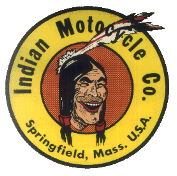According to the book, the float should be floating horisontal on the gas surface 7/16" below the bowl rim measured on top of the float. Now watch out! The important gas level is depending on your float shape, material and boyancy if it is heavy or light! More correct is to measure the gas surface level! I have old personal notes of gas surface level 18mm below the rim but...I think that is one or two millimeters too low and when I now do a quick check with just WATER!, the level is 15mm, so I am not certain. Oh, I discovered the seat is worn after roughly 4 riding seasons of neglect...
The gas surface level is important, if it is too low your motor is very hard to start especially cold and may need choke even warm, and also if it is too high the fuel consumption is suffering. A well tuned carb would seldom need much choke on a warm day even starting cold, and never need choke when warm.
The main reason for a leaking carb in most cases is a worn float needle and seat. The needle is hammered down in the seat and the sealing surface becomes too wide. As the needle can't seal in another position than one, any canting will result in a leak. The float is rocking on its pivot pin, together with wear on the tiny ball (it's hollow!) on the top of the needle, so the needle is rarely guided properly.
The seat needs to be just a horse hair wide and rounded so the needle can seal in all positions it can assume. The rounded seat is accomplished with (10 minutes of) hard finger pressure on the needle in a circular pattern. The tip needs to be close to a mirror finish and the top ball and its seat is better to be polished as well. In my experience, any use of lapping compound coarser than toothpaste will result in failure to get the needle to seal.
Done properly and with care, to restore the seat and an old needle is possible in most cases. It is a bit complicated to describe without pictures, but doesn't take a lot of special tools, just a Dremel and a electric drill so if anyone interested, send me a mail.
Viton tipped needles for Linkerts has been floating around with diversed results, with some gas concoctions sold today the tip has been found to swell. I don't think it is available for our needles and as the needle cants with the poor guidance there is, a rounded seat is still needed.
The float can act up in some cases, it can unfasten from the pivot hinge or the hinge and its shaft become so worn and allow the float to catch on the bowl sides. A tight carb can start to leak just by putting the bike on the sidestand as the float rocks the needle. A miniature reamer for the pivot and a oversize pin is one way to fix that. Or the float can become logged with gas, swell or break. But mainly the reason for a leaking bowl is a worn needle and seat.
If you decide to change float, (strongly recommended in my opinion) go for the lightest possible new material foam float. They will keep the float level most constant and produce less wear on the needle/seat. I prefer those that has been developed by Tom Cotten. The heavier float, the more needle seat wear, as a heavy float bounces and allow higher amplitude vibrations. The brass is one of, if not the heaviest on the market!
Indian Parts Europe (IPE) is stocking them new fangled floats and also selling excellent repro original looking petcocks. The gas petcock has a viton or ptfe tip and the oil petcock is lined with PTFE. To restore the seat in the gas petcock body isn't impossible but that requires a small cutter for the seat, and to regrind or turn the spigot tip. Or maybe you can adapt a plastic tip on the old one. Again it is hard to succeed with grinding compound. One idea would be to turn a hardwood stick with the proper angle, to use for carefully polish up the seat in the body? But I haven't tried that.


